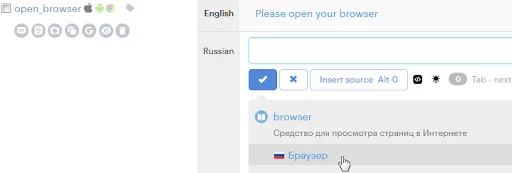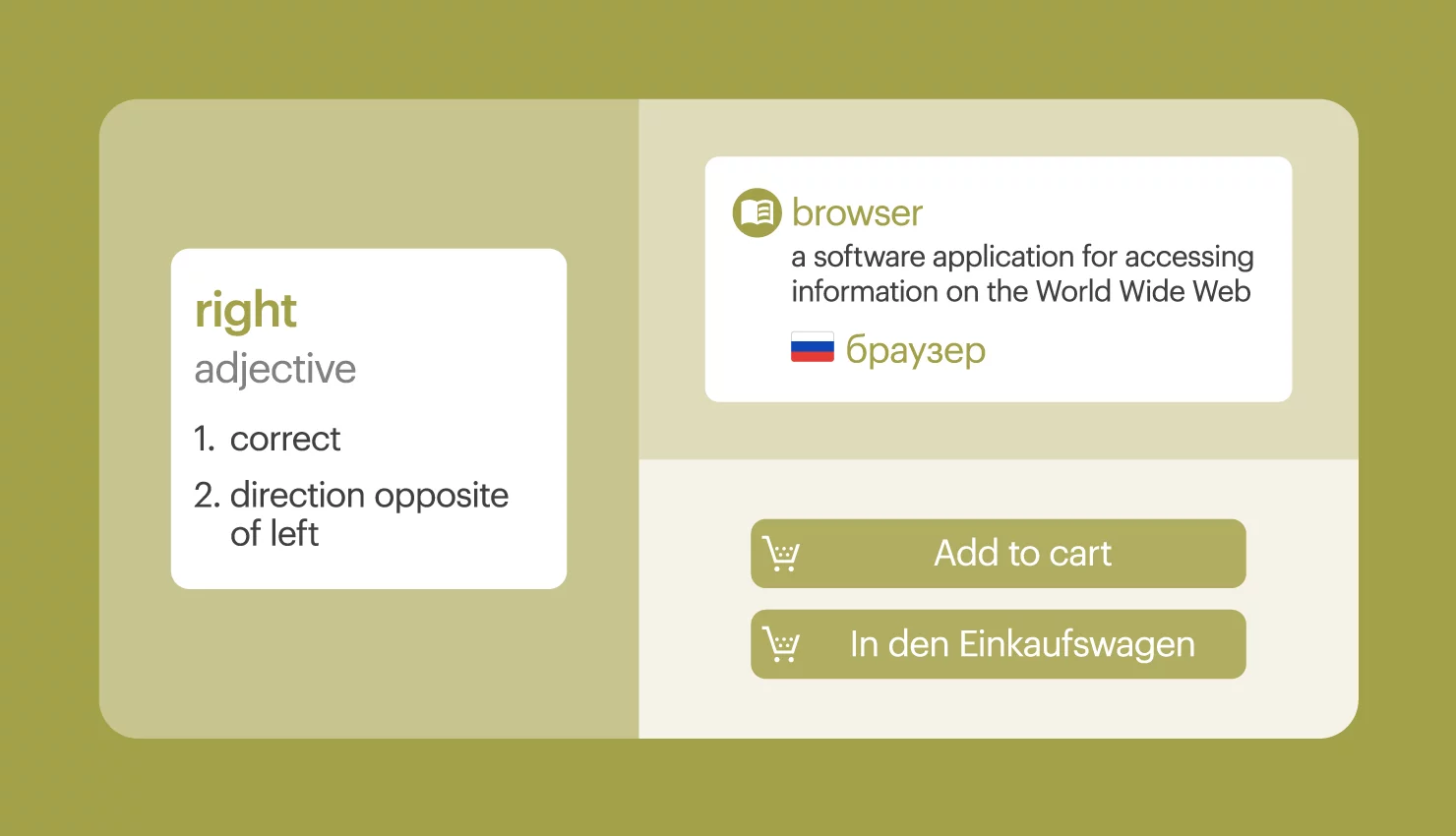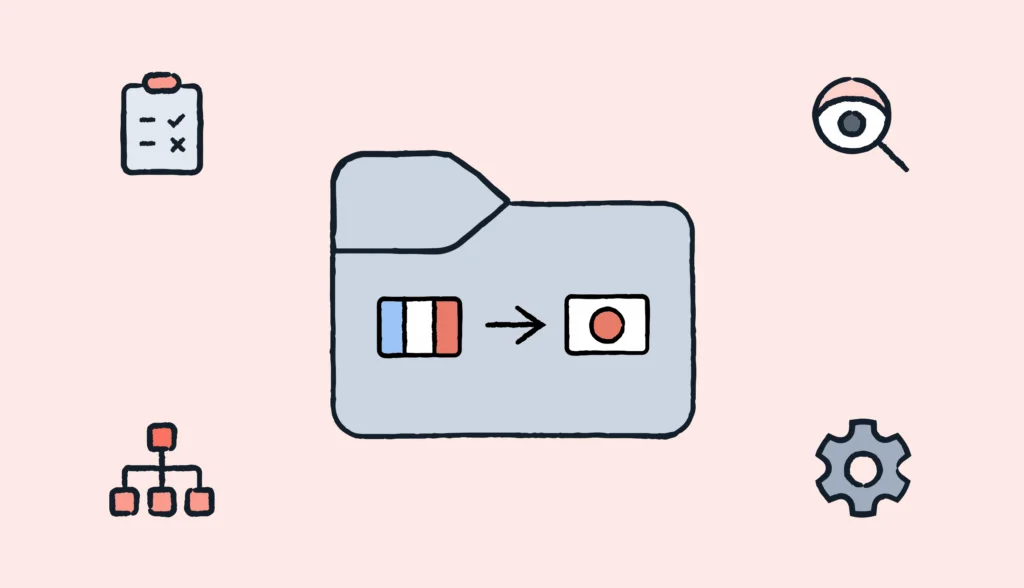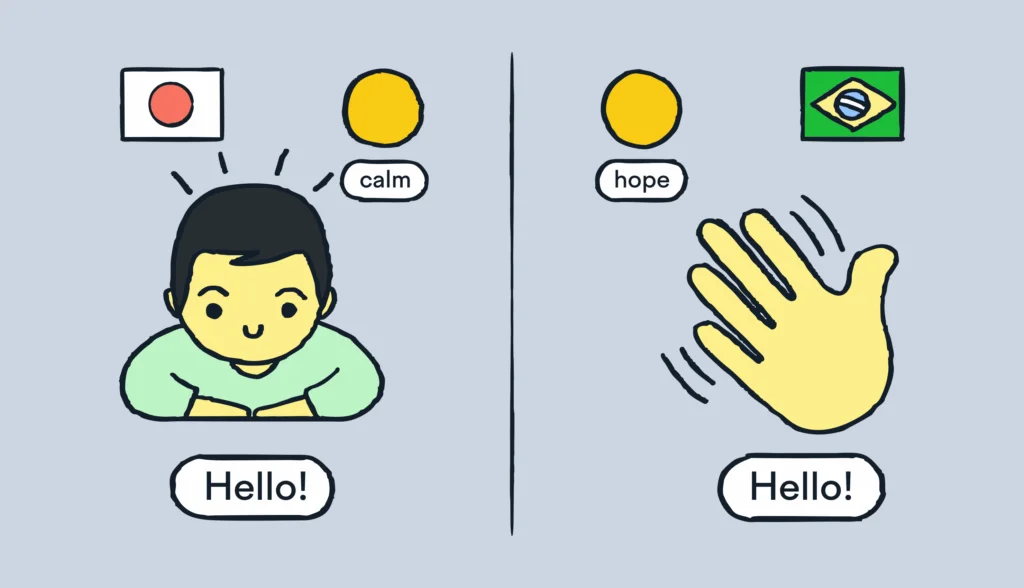To put it simply, the more context (communicative, situational, and visual) you provide to your translation team, the better quality translations you will receive.
It’s a no-brainer, enabling your translators to translate in context is a win win. The more you put in, the more you get out. One question I often receive from companies interested in using a TMS (translation management system) such as Lokalise is “How do I provide these context measures so that my team returns the highest quality translation possible?”.
For teams involved in localization projects of any scale, going back and forth with translations in multiple languages is a known pain point. Missed context is normally the main issue when you have to address the quality of translations, from different meanings for the same word, to the length of phrases, etc. Too many errors occur simply due to little to no instructions being provided. Understanding “what AI translation is” can help mitigate these issues, as it allows for more context-aware, consistent translations. Moreover, if these mistakes are not discovered during QA, as no one internally speaks the target language, they will be discovered by users, impacting their experience with your product.
What type of context should you provide to receive the highest quality outcome? How do you do it without going back and forth over multiple emails or documentation for every single language? Well, today I will give you the full briefing in regards to context.
The three core types of contextual measures
Contextual measures can be broken down into 3 different categories: communicative, situational, and visual.
- Situational contextual measures are fundamental at the beginning of any translation project to give initial context to your translator. Situational context provides the details for the type of communication that a translator needs to follow. In simple terms, the translation may differ based on the situation, circumstances, or other settings that one must take into account.
- Communicative contextual measures cover a variety of different steps to take to ensure that you are not leaving all the work to your translator, you are giving them a guiding light. This type of context helps to establish the meaning of certain words or phrases within the given subject, which is especially important when a single word can imply various different messages.
- Visual contextual measures are a way to show, rather than instruct, your translation team what you would like to achieve from your translation in the live environment.
1. Situational context measures: providing the broader picture
The first step you should always take when asking a translator to translate any content of any type is to provide situational context. These are things translators should really take into consideration when translating from base language to target. I stress this as an absolute necessity when it comes to localization example, and actually understanding the difference between translation and localization is vitally important.
Let’s look at an example sentence.
English: Do you want to go to the shop?
Being a native speaker of the English language, I know that this question would be perfectly fine in any situation. If I asked a translator to translate this sentence into French, there would be the problem of who the question is addressing, as the French language still has the polite and casual forms of the ‘you’ pronoun.
If I provided some situational context about this sentence, for instance that the end translation needs to target a younger audience and have a more relaxed vibe to it, my translator could translate this to the casual form of the sentence:
French: Veux tu venir au magasin?
If I provided the situational context about this sentence that it would target a more official audience with a formal tone, my translator could translate this sentence using the following, more formal language:
French: Voulez vous venir au magasin?
How we handle context at Lokalise
Lokalise offers a variety of different opportunities to provide situational context measures to your translation team, such as:
- Placing key descriptions on every key to inform the translator of any necessary situational context.
- A comment section on every key, which is linked to a built-in project chat, to communicate directly with your translators.
What is important here – you only provide these guidelines once, and all translators involved in the project gain access to them. Furthermore, you don’t have to answer the same question again and again. When a translator asks a specific question in the chat, your answer is visible to all other translators involved in your project. A content translation guide helps centralize this information, ensuring consistency and saving time across the board.
2. Communicative context for your translation team
As important as situational context but slightly different in delivery. Let’s take three words in English which are all spelled the same yet can have two different meanings.
Bark – a tree’s outer layer / the sound a dog makes
Right – correct / direction opposite of left
Well – in good health / a source of water in the ground
In English, these are known as homonyms and there are many of them, I mean MANY. If we take the Spanish language, there are far fewer of them. Why am I telling you this? Well, this is precisely a communicative context.
Let’s take a look at this sentence in English:
“He is currently shooting.”
If I just hand this piece of information over to my translator with neither situational nor communicative context, how will they decide between “disparando” or “filmando”? Offering an effective communicative context to my translator can guide them toward choosing the right word for the job.
Another example of when providing communicative context is crucial is for company-specific terminology. Terminology affects translation. Brand name, product name, industry-specific terms, or even made-up words – you cannot expect translators to understand what exactly they mean unless you tell them. What’s more – some of these terms might not even require translation, or vice versa – they have to be adapted to a target market.
Think of the famous Nokia Lumia localization example that went wrong in the Spanish market. Translation fails can quickly go viral and no company in the world is immune to bad translation. If you think that some words or phrases should be translated using common sense, think again.
Providing context for these specific words and terms ensures consistency across different materials and languages, as well as allowing you to eliminate any ambiguity about what you really mean.
Managing communicative context with Lokalise
Placing key descriptions and adding comments would also help with providing communicative context. Besides that, Lokalise has an intuitive cross-project glossary (termbase) that can be used to keep project translations consistent. Each term can be defined and described within the glossary and will automatically show up in the UI.

It is important to develop a good glossary of terms from day one. Glossaries are normally reviewed by product teams and translators before they even start working on the project at hand.
Providing this communicative measure can instruct your translator to choose the correct word or phrase to best match your desired outcome. Again, the better equipped your linguists are, the better quality translations you will receive.
3. Visual context for your translation team
By this stage in a project, you have given the situational context to your translation team by providing them with useful information such as the audience, location, etc. You have given them a communicative context concerning the different wording in the text. Now it is time to give them the visual context so they can see where their translations will sit in the live environment.
Visual contextual measures are just as important as situational and communicative context. With the known meaning of your project, there might still be multiple choices for a given translation. Depending on where and how the exact term is going to be used in your user interface, translators are able to choose the right wording.
This is especially important when you are localizing from a language that translates to a longer word from base to target. Missing visual context can lead to UI misalignment and design breaks.
Let’s look at an example from Amazon, comparing English and German translations.
Take the English phrase: Add to Cart
This has been translated to German as: In den Einkaufswagen

Having a visual context in place could help your translator to decide on a different word with a similar meaning in the target language, so as to not break the UI.
Similarly, the same word in English used in different instances in a single app might require a completely different translation in the target language depending on where exactly the word is placed. Visual context for where words like ok, go, next, etc., would be used, again helps your linguist to choose the most appropriate translation. Applications of AI Translation can assist in this process by analyzing context and providing more accurate, location-specific suggestions.
Integrations with Lokalise to utilize visual context
Several amazing design tools integrate with Lokalise including, Figma, Sketch, and Adobe XD. Connecting these tools with the translation management system allows you to automatically share design content and screenshots of your web or mobile app with your translation team.
What does it mean? You can start working on a localization project before a single line of code is even written. Best AI translation tools can further enhance this process by providing fast, accurate translations directly within your design workflow. These integrations allow you to seamlessly switch between languages, helping you to assess and manage differences in text length (depending on the language).
Alternatively you can upload screenshots directly to the platform and set up filters by screenshots. Lokalise automatically recognizes the text on the screenshots and links the uploaded screenshots to the keys so they show up in the editor.
Here is a simple video tutorial to show you how it works:
Last but not least, Lokalise’s in-context editing tools let your translators or copywriters see in real time how changes in translations look in your web or mobile app. This provides even more context by showing where exactly the translated text will be displayed in the live environment.
Summary
Just like with any project, you need to successfully complete each step for the best final result. Putting your contextual measures in place will not only help to speed up projects, but it will also reduce errors and potential pain points when working with your translators.
It’s this workflow that will improve the level of translation quality, allowing your translator to deliver a far more accurate text first time around. This reduces the need for multiple reviews and allows you to concentrate on completing your projects on time and, more importantly, with the perfect text in the chosen language.
Using a translation management tool like Lokalise can help you to share translation context more effectively. Learn more about in-context editing possibilities with Lokalise.





